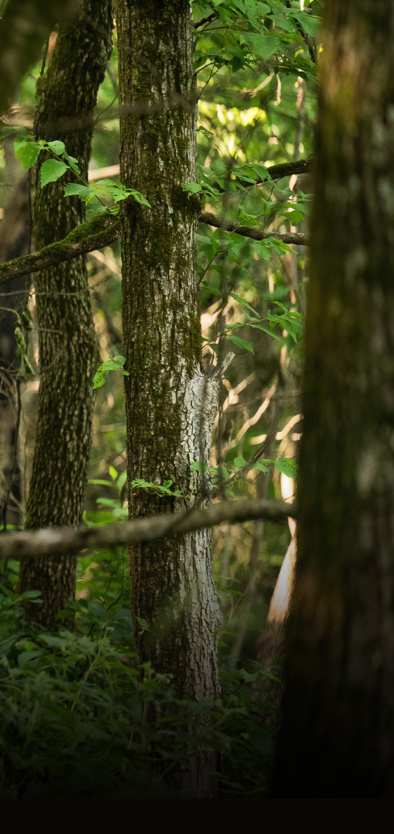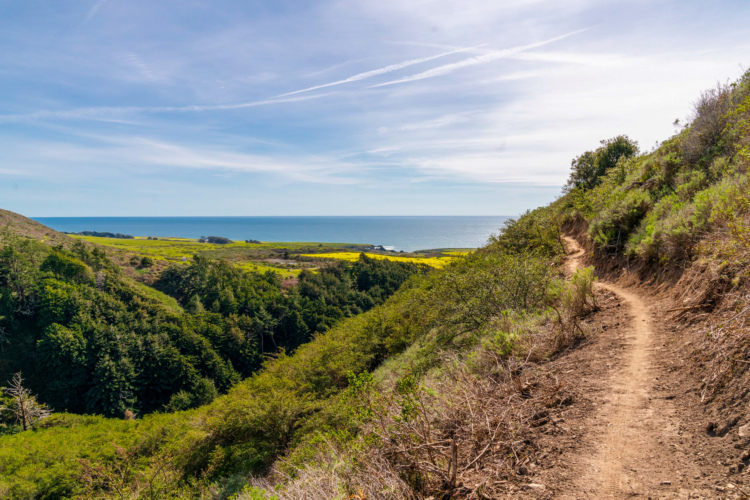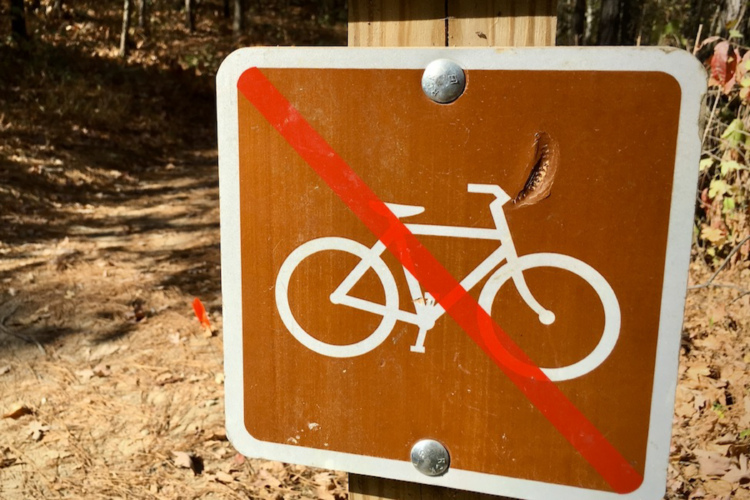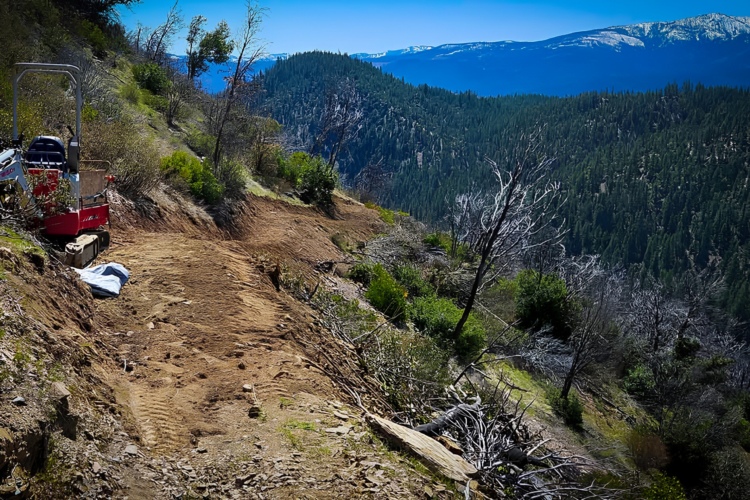
Shortly after Scott Bartlebaugh moved from Ohio to California in the mid 1980s, he noticed a flier advertising the Sierra Club tacked to a bulletin board at the local REI. Knowing a bit about the group’s founder, John Muir, Bartlebaugh had a favorable opinion of the Club. But that quickly changed once he started meeting Bay Area riders who had been affected by the group’s fight against public trail access for bicycles.
If not for that opposition,”I probably would have become a member back then,” he said.
Almost 40 years later, he finally decided to join the San Francisco chapter of the Sierra Club.
A longstanding reputation
A Singletracks headline just this year proclaimed, “The Sierra Club and other environmental activists oppose MTB trail development in Columbia, Missouri.” While local Sierra Club chapters often oppose specific trail projects, the national organization takes a different stance. In a 1994 agreement with the International Mountain Bicycling Association (IMBA), the Sierra Club officially stated that “bicycles can be legitimate users of many non-Wilderness backcountry trails.”
The policy portion of the agreement generally says that a trail should be determined to be appropriate for bicycle use through a proper environmental analysis that includes a public comment and review process. In fact, nearly every trail project on public land in the US already requires this, and in many cases, multiple analyses and approvals are completed before a trail can be built.
To be clear, the Sierra Club policy document doesn’t come close to voicing full-throated support for mountain bike trail access. “Single track [sic] trails can present difficult management, safety, and environmental protection situations, but may be acceptable [emphasis added] for bicycling as determined on a local, case-by-case basis.”
Despite the wording of the Sierra Club Off Road Use of Bicycles policy, last updated in 2023, some local groups, including the San Francisco Bay chapter, have historically chosen to take an even narrower view, opposing most if not all efforts to allow bikes on trails.
Proposed flow trail divides opinions
In 2023, the East Bay Regional Park District began gathering feedback on a plan to build a new, roughly one-mile-long flow trail in Wildcat Canyon Regional Park that would help separate bikers from other trail users within the popular system. According to backers of the plan, the proposed trail corridor would avoid disturbing wildlife and sensitive habitats while providing a benefit to the high school and middle school mountain bike teams that regularly visit the trails for practice.
Some members of the Sierra Club San Francisco chapter quickly voiced opposition to the proposal on environmental grounds before the required California Environmental Quality Act (CEQA) assessment had even begun. CEQA is a process designed to systematically evaluate the potential environmental impact of proposed projects.
A youth mountain biking program opens the eyes of a longtime member
Barbara Smith joined the Sierra Club 35 years ago and enthusiastically jumped into the San Francisco chapter’s Inspiring Connections Outdoors (ICO) program. ICO introduces kids from underserved communities to the outdoors through outings and adventures where they learn to appreciate and protect the environment. More recently, Smith started coaching a middle school mountain bike team and saw a similar dynamic at work.
“So I joined the local Sierra Club Public Lands Committee, with the goal of fostering dialog, to build understanding and support for what our local park district — the East Bay Regional Park District — is doing […] to improve trail access for bikes,” said Smith.
In what some critics framed as a “takeover” of the committee, Smith was elected Chair of the Sierra Club East Bay Public Lands Committee. Bike advocates within the club, including Bartlebaugh, who serves as the Advocacy Director of the Bicycle Trails Council of the East Bay (BTCEB), supported Smith’s appointment.
Shortly thereafter, in March 2025, she issued a letter to East Bay Regional Park District officials informing them of an update to the chapter’s Policy for Off-road Use of Bicycles on Public Lands, which had previously opposed mountain bikes on narrow trails in most, if not all, cases.
“I am pleased to inform you that the Sierra Club SF Bay Chapter explicitly recognizes that bicyclists can be legitimate users of many backcountry trails and supports responsible off-road bicycling, except in designated Wilderness areas,” she wrote. In effect, the update aligns the chapter’s stance word-for-word with the one the Sierra Club formally established nationally 30 years ago.
With an estimated 40,000 members in the San Francisco chapter of the Sierra Club alone, and nearly 4 million members altogether, it’s certain that not everyone in the group will agree on every issue. Within any large organization, there are bound to be extreme positions on the fringes, and in our conversation, both Smith and Bartlebaugh emphasized the need to find common ground. Though some have painted the newer mountain biking members as interlopers, Smith says she and the others who support responsible bicycle trail access are “not single-issue people,” noting the Public Lands Committee is equally engaged on issues like preventing wildfires within the parks and “increasing equity of access to the parks we all love.”

Meeting in the middle
Bartlebaugh, in his capacity as the Advocacy Director for the BTCEB, co-signed a 2024 letter with the chapter’s former Chair of the East Bay Public Lands Committee. In the letter to the East Bay Regional Park District, the bicycle group and the Sierra Club chapter together pledged “to support, and hopefully expand your maintenance efforts in the parks through our combined network of volunteers willing to spend time helping to maintain the parks and trails that all users love to use.”
Following a 20-month pilot project, the parks department has recommended sanctioning 3.5 miles of previously unofficial downhill MTB trails in Briones Park and opening another two miles of shared-use trails for both hiking and biking. The parks department has also recommended closing and restoring five miles of unofficial trails that were located in a sensitive wildlife habitat. Smith and Bartlebaugh both described the outcome as a win-win for mountain bikers and the environment.
Hope for the future
It should come as no surprise that mountain bikers and environmentalists are able to work together. After all, neither group is mutually exclusive; the riders Singletracks has surveyed have a tremendous respect and appreciation for the environment, and bikes are an eco-friendly form of transportation and means for getting outdoors. What is surprising is that it’s taken this long for the two groups to come together.
“Youth mountain biking […] brings a new generation of park users to the parks, and they learn trail etiquette. They learn to care for the parks, they do trail stewardship, they do work days, they do habitat restoration,” Smith said. “When I’m out riding with the kids, people are just thrilled. Hikers are thrilled to see them out there enjoying the trails. They’ll stop us and say, ‘Thank you for getting these kids out here. It’s fantastic.'”
An earlier version of this article stated that Bartlebaugh was not yet a member of the Sierra Club chapter at the time of the joint letter to the East Bay Regional Park District. He was in fact a member at the time of signing the letter.





















4 Comments
2 weeks ago
2 weeks ago
2 weeks ago
2 weeks ago